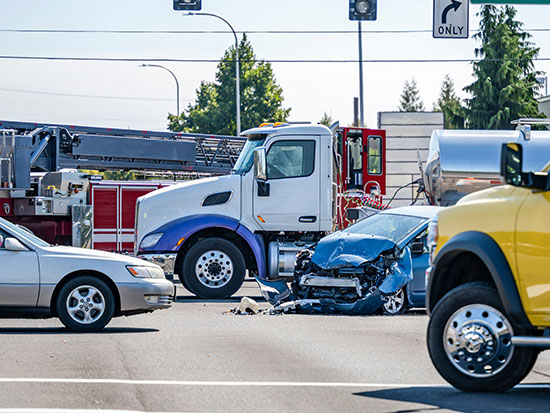Media contact: Hannah Echols
 Despite fewer drivers on the roads and fewer injuries per accident, fatal crashes in Alabama increased by 26 percent over the three years from 2020 through 2022.Motor vehicle collisions are the leading cause of unintentional injury death in Alabama, and the state consistently has one of the nation’s highest rates of fatal crashes, adjusted for population size.
Despite fewer drivers on the roads and fewer injuries per accident, fatal crashes in Alabama increased by 26 percent over the three years from 2020 through 2022.Motor vehicle collisions are the leading cause of unintentional injury death in Alabama, and the state consistently has one of the nation’s highest rates of fatal crashes, adjusted for population size.
Despite fewer drivers on the roads and fewer injuries per accident, fatal crashes in Alabama increased by 26 percent over the three years from 2020 through 2022, according to a new analysis by University of Alabama at Birmingham researchers. Their paper, published in Accident Analysis and Prevention, is the first to examine how motor vehicle collision-related mortality rates and the individual components of those rates changed over the course of the pandemic.
“Despite the decrease in exposure, with fewer miles traveled and fewer injuries per collision, there was a large increase in deaths per injury,” said paper first author Lindy Reynolds, a doctoral student in the UAB School of Public Health’s Department of Epidemiology.
Previous studies focused on limited periods of time during the 2020 COVID lockdowns. Reynolds, along with Russell Griffin, Ph.D., associate professor in the Department of Epidemiology, compared the 2020-2022 data with records from the three pre-pandemic years of 2017-2019. The study contributes to mounting evidence that the risky driving behaviors observed during the 2020 lockdowns — including excessive speeding, driving under the influence and failure to wear seatbelts — have continued.
“We saw a 26 percent increase in the case fatality rate, and if we hadn’t had the decrease in vehicle miles traveled and injuries per crash, it would have been higher,” Griffin said.
The genesis for the current study was the ongoing work that Griffin and Reynolds do with UAB’s Center for Injury Science and the Crash Injury Research and Engineering Network, both located in the UAB Division of Trauma and Acute Care Surgery.
“Motor vehicle collisions are the number one reason people come to the emergency department here at UAB,” Griffin said. “With traffic fatalities appearing to increase during the pandemic, this made an interesting research question.”
As injury epidemiologists, Griffin and Reynolds provide research support for trauma and emergency medicine studies within UAB. Their work helps clinicians understand whether changes in care processes are having the desired effect on patient discharge rates, for example. They also examine wider trends.
Griffin also works closely with the Association for the Advancement of Automobile Medicine, or AAAM, an international organization that studies ways to reduce road traffic injuries. He and Reynolds are now completing a similar analysis with national data. Reynolds was selected to give an oral presentation on their current research at the AAAM conference in October.
“That’s the cool thing about injury epidemiology,” Griffin said. “We can take the local observations we make about trends and use the resources available through these databases to inform decisions at a national level.”